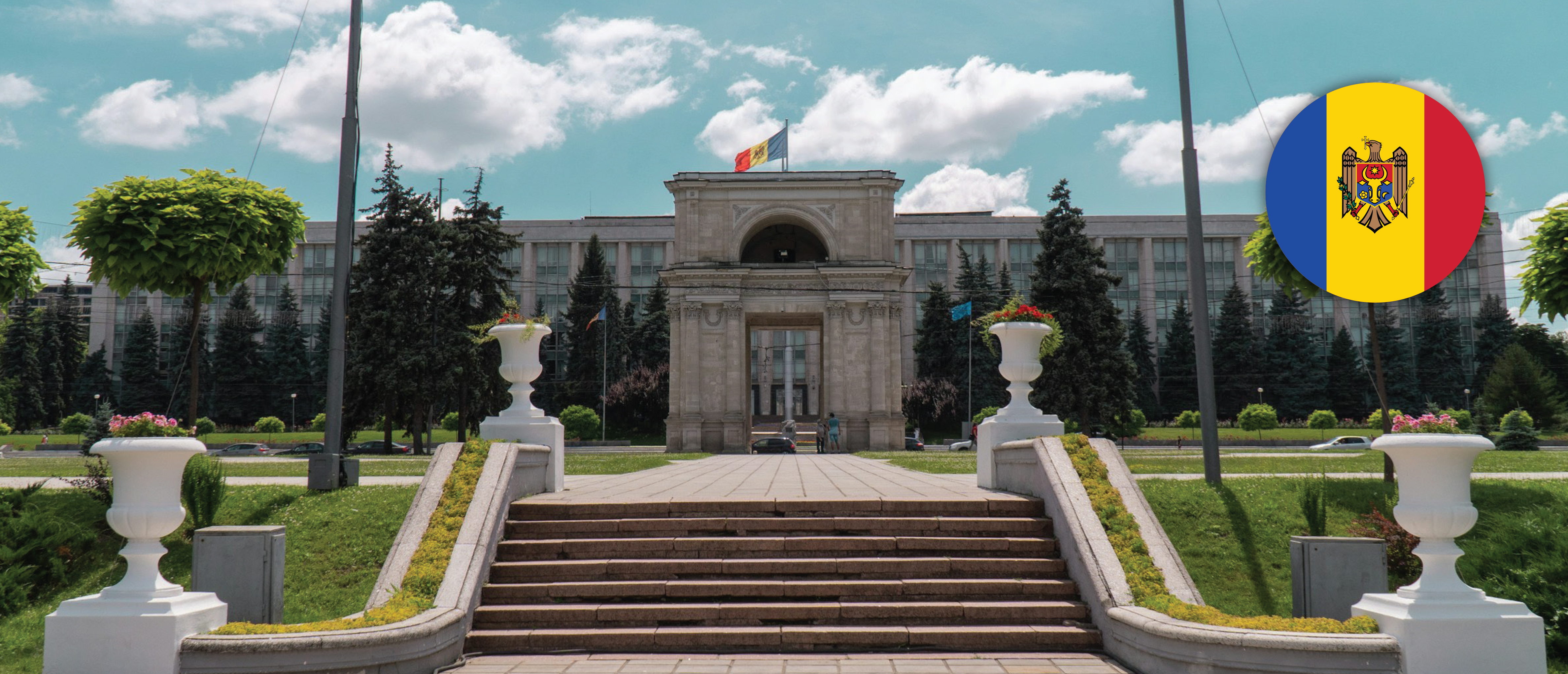General Information
Population
Immigration
Emigration
Working-age population
Unemployment rate
GDP
Refugees, Asylum seekers, IDPs
Citizenship
Territory
Migration Authorities
Responsible Body
Line Ministries
Agencies
Key Policy Documents
Programme on the Management of Migration Flows, Asylum and Integration of Foreigners (2022-2025)
The National Strategy ‘Diaspora 2025’
The National Development Strategy ‘European Moldova 2030’
Programme on Integrated Border Management 2022-2025
The Mechanism for coordinating the state policy in the field of diaspora, migration and development
2011 Law on the Integration of Foreigners in the Republic of Moldova
2010 Law on the Regime of Foreigners in the Republic of Moldova
Description
Since 1990, the population of the Republic of Moldova has been steadily declining owing both to lower birth rates and considerable emigration, with the country experiencing negative net migration year after year. During the 1990s, there was a notable outflow of irregular migrants. However, from the 2000s onwards, enhanced legal channels led to a sharp increase in regular labour migration, a trend that continues today.
Between 2014 and 2023, the resident population of Moldova decreased by nearly 450 000 people. Simultaneously, the stock of Moldovan nationals living abroad, according to UN DESA, rose from 930 000 in 2015 to 1 160 000 in 2020. According to official data on border crossings, 241 448 persons left Moldova in 2022 – almost twice as many as in 2014, marking the largest outflow in a decade. Most of those leaving are young people below 44 years of age. This ongoing outmigration presents challenges for a country with a population of just 2.5 million, making Moldova dependant on remittances, which exceeded 2 billion US$ in 2023, corresponding to 12.3% of the country’s GDP. This situation also underscores the need for smart policies to capitalise on the vast Moldovan diaspora.
Unfavourable socio-economic conditions in Moldova make labour migration an attractive strategy. In 2022, some 93 000 Moldovans went abroad for work or to seek employment for a period of less than a year, and another 126 000 Moldovans either had a job abroad or planned to work abroad for a longer duration. EU Member States remain key destinations for Moldovan labour migrants. In 2023, preliminary data indicates that nearly 22,500 Moldovans received their first residence permits in EU countries. Of these, approximately 9,600 were granted for employment purposes, while around 9,000 were issued for family reasons. The number of valid permits issued to Moldovans for employment reasons in the EU at the year-end constituted nearly 80 000 in 2022 and over 70 000 in 2023, based on preliminary data. Poland issued the largest number of first-time work permits to Moldovan nationals, exceeding 8 000 in 2022 and approaching 6 000 in 2023. Meanwhile, Italy continues to host the largest number of Moldovans with valid work permits, with over 60 000 in 2022 and more than 55 000 in 2023.
Immigration to Moldova for permanent residence remains low but has seen an increase in 2022 and 2023. In 2023, the country recorded 7 203 immigrants , 42.4% of which arrived for work reasons, including investment, 38.7% to reunify with their families, 12.7% for studies, 3.7% for volunteering, and 2.5% for other purposes. The majority of them came from Russia (1796), Ukraine (1277), Türkiye (771) and India (468). The stock of international immigrants, as recorded by UN DESA in 2020, accounted to 104 438 persons, with 40 000 from Russia and 42 000 from Ukraine.
The outbreak of war in Ukraine in February 2022 triggered an influx of displaced persons into Moldova, stretching the country’s limited capacities and prompting the adoption of urgent measures, including the introduction of Temporary Protection on 1 March 2023. During 2023, Ukrainian citizens dominated (90%) among asylum seekers at the first instance, followed by Russian nationals (3.6%) and Syrian nationals (1%). As of July 2024, 2,502 asylum seekers were registered in Moldova’s asylum system, of which 207 with refugee status, 422 beneficiaries of humanitarian protection, and 1,873 cases under examination. Between 1 March 2023 and July 2024, 65,113 displaced people from Ukraine were registered in Moldova.
Beyond the immediate impact of the war in Ukraine, the conflict has accelerated Moldova’s rapprochement with the EU. The country applied for EU membership in March 2022, received candidate status in summer 2023, and began official negotiations in summer 2024. While the path to EU membership remains uncertain in length, it is expected to drive further reforms process in migration, asylum and border management in Moldova. The country has already enhanced cooperation with the EU through deployment of FRONTEX and EUROPOL officers (along the existing EUBAM), as well as the establishment of the EU Security and Border Management Hub in Chisinau. Moreover, already in early 2021, Moldova joined the European Migration Network as an observer state. In 2022, the country approved new sectoral programmes on Migration Flows, Asylum, and Integration of Foreigners and Integrated Border Management. That same year, the government also approved the National Development Strategy “European Moldova 2030”, outlining the strategic vision for the country’s development over the next seven years, with a strong focus on migration. Together with the National Strategy “Diaspora 2025”, both documents address a wide range of aspects covered by the Global Compact for Migration, including diaspora engagement in policy making, creating investment opportunities, protecting the rights of Moldovans abroad, and implementing return and reintegration programs. As of summer 2024, Moldova has over 13 valid readmission agreements with several EU Member States, Switzerland, Norway, North Macedonia, Serbia, Bosnia and Herzegovina, Montenegro, Türkiye, Albania, Georgia, Kazakhstan and Ukraine, and is negotiating similar agreements with several other countries from the Caucasus and Central Asia.
